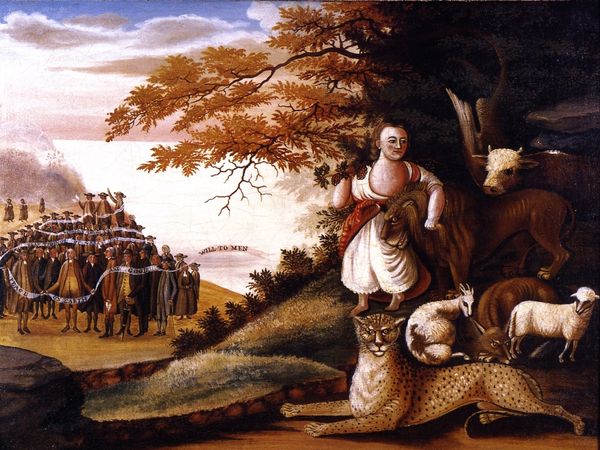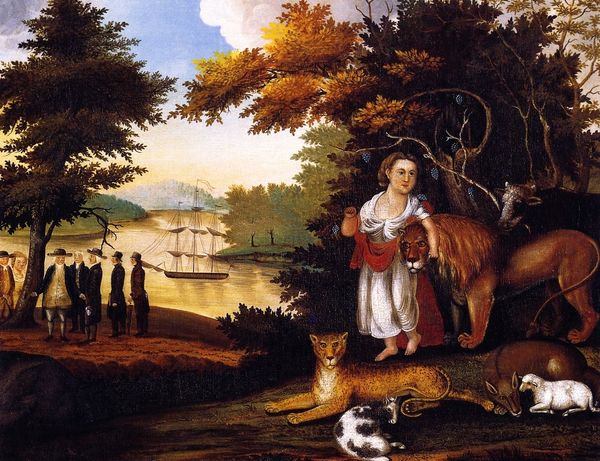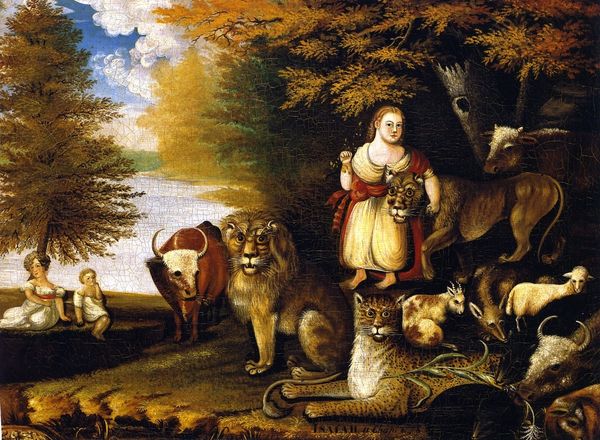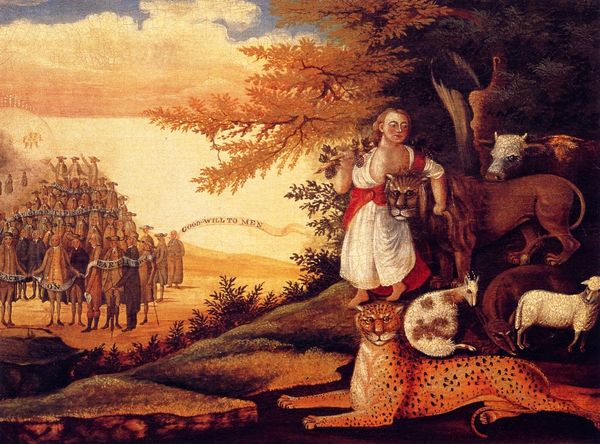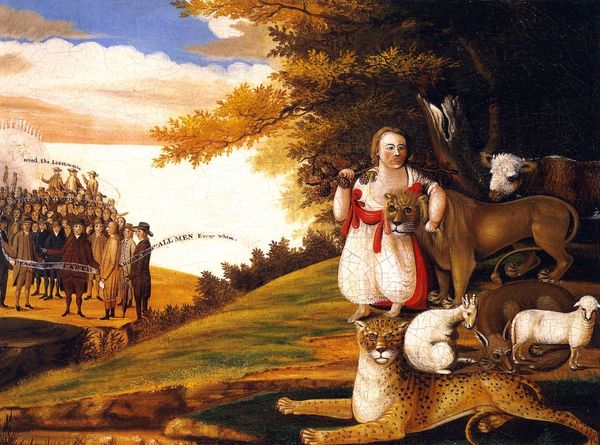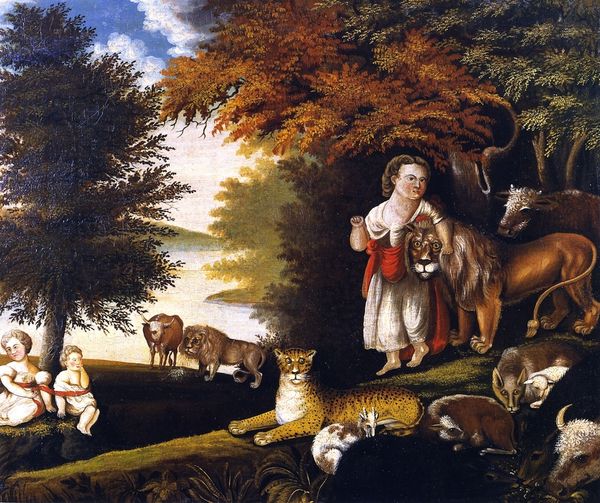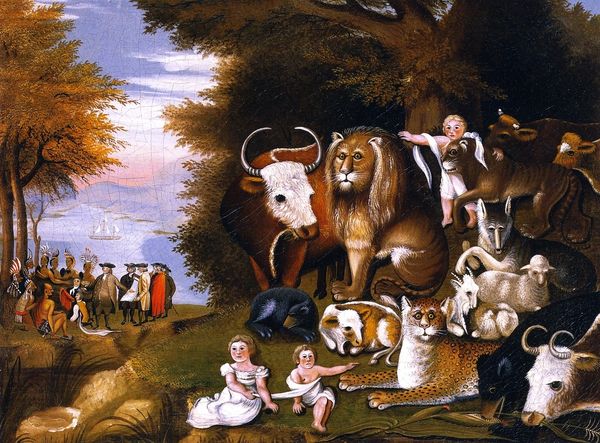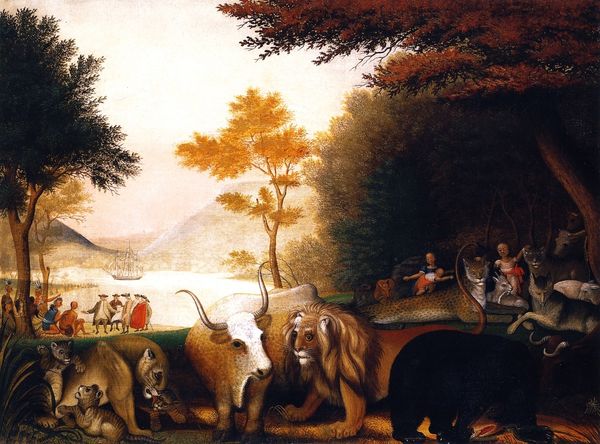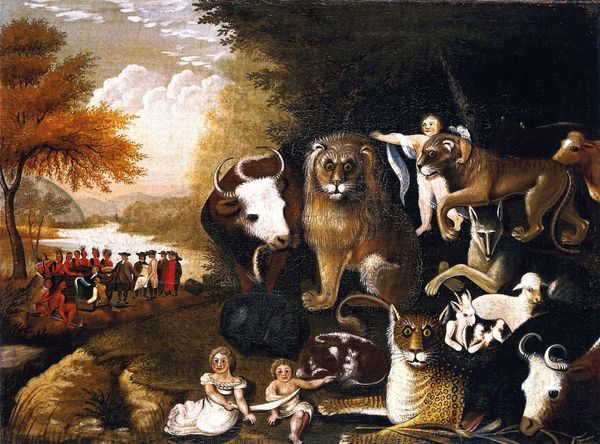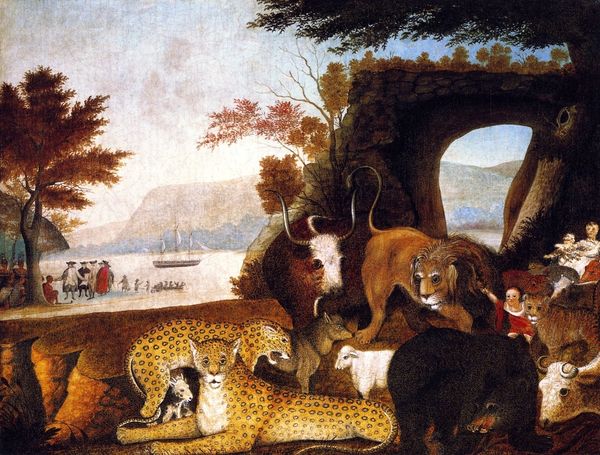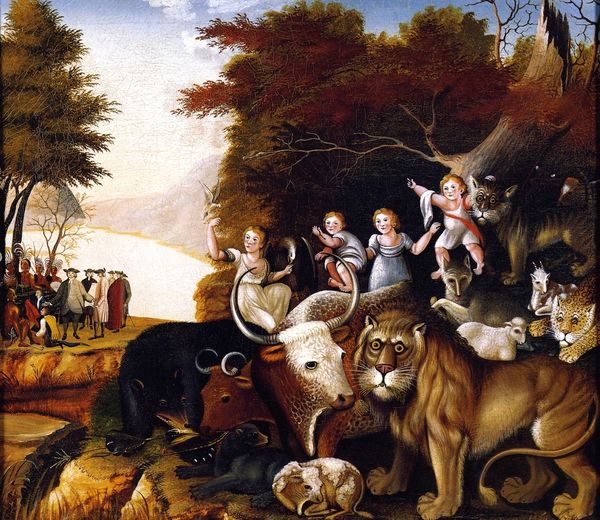
#
abstract painting
#
fantasy art
#
possibly oil pastel
#
derelict
#
fluid art
#
world underwater
#
mythology
#
surrealist
#
3d art
#
mixed media
#
ruin
Copyright: Public domain
Editor: So, this is Edward Hicks’s "Peaceable Kingdom," created around 1830. It's quite striking! All these different animals together… there’s something almost naive, yet incredibly powerful, about it. What jumps out at you when you look at this piece? Curator: It's a painting steeped in symbolism, pulling from deep cultural wells. Hicks, a Quaker minister, draws heavily from the Book of Isaiah and its vision of harmony. Look at the juxtaposition of the serene landscape with the grouping of the animals. Notice the lion and lamb. Editor: Right, the lion and the lamb! Is that always a religious reference or does it change meaning over time? Curator: In Hicks’s era, particularly within Quaker thought, this image embodied not just religious harmony, but also a more profound social reconciliation. Look closer, Editor. Beyond the animals, what human figures do you see, and how might they play into this overall theme of peace? Editor: There's what looks like a treaty signing between William Penn and the Native Americans… Does that imply a colonial dimension to the concept of "peace"? Curator: Exactly. The painting invites us to consider the complexities and historical realities interwoven with the ideals of harmony and reconciliation, and how this evolves through imagery, impacting later visual art as well. These aren't just animals; they're metaphors charged with the weight of history and hope. Editor: Wow, I hadn't considered that layering. It's fascinating how a single image can hold so much cultural memory. Thanks for illuminating the painting for me! Curator: My pleasure. Looking through the lens of shared cultural understanding helps to contextualize art and the messages they portray!
Comments
No comments
Be the first to comment and join the conversation on the ultimate creative platform.

